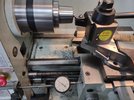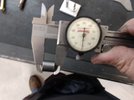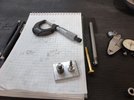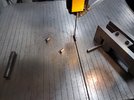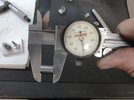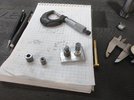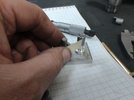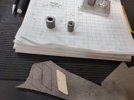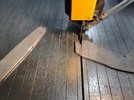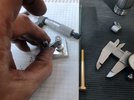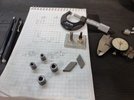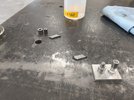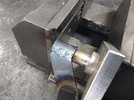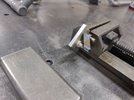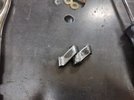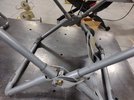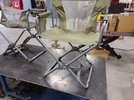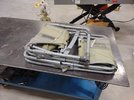I've been a bit absent lately dealing with some health issues over the past several months but I'm slowly trying to get caught up on personal projects so I can move on to other projects that I've promised out.
One of my personal projects was a chair repair. During our spring trip to the Swell in April, my "Jeeping" chair broke on the last day of the trip.
At first thought I was going to replace it but have had a hard time finding something that I thought was made as well and then the wife suggested I just fix it. Well initially the small cast aluminum pieces that broke were also the hinge/pivot component and I was not quite sure how to go about duplicating them so I discounted the idea of fixing the chair. Then after looking and not finding something I liked, plus I prefer to repair or repurpose things, I opted to give it a try. I have actually been procrastinating on the repair due to not really knowing how to go about it but last night I bit the bullet, devised a plan and executed the plan for the repair.
This will be a large picture dump and cover several posts so bare with me please.
This is my chair that broke. The left hinge or pivot broke completely and the right side was cracked and nearing failure.
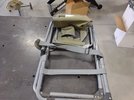
This is where the cast aluminum pivot blocks reside.
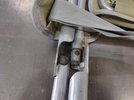
Here is my wife's chair showing what it is supposed to look like when folded/collapsed. These are great for taking up little space in the back of the Jeep. They have gotten a lot of use over the past 8 or so years that we've owned them as we use them for lunch stops when off-roading and many times at happy hours during our rallies and gatherings with our RV club.
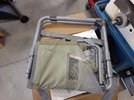
Knowing that hole spacing was critical to not only allow the chair to fold properly but also so I could use the existing holes in the leg's framework I thought it would be best to devise a fixture in which to make the new pivot blocks with. Hole spacing measured out using the DRO on the mill then the proper sized pins were machined on the lathe and pressed into the holes in an aluminum block.
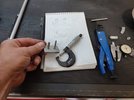
An aluminum spacer was machined to hold the small end up at the correct height on the fixture.
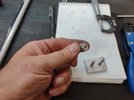
The OD was turned down slightly on the spacer to allow enough clearance for the small piece of plate that would need to be added later.
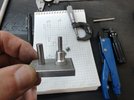
This is the original cast aluminum pivot block that broke being used for measurements and design.
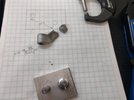
Original cast aluminum pivot placed in the fixture to ensure spacing.
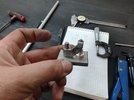
I originally thought about making the new pieces out of aluminum but ultimately settled on steel using O1 drill rod for the large (.500") and small (.375") ends. Here are the .500" diameter pieces faced off, .250" diameter hole drilled and chamfered then cut on the bandsaw before facing to length. I cut them on the bandsaw slightly over the .500" required length to allow a little clean up with a facing cut and chamfer. This piece was .057" too long.
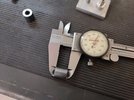
Chucked up in the collet, touched off with the facing tool and then my soft stop dial indicator set to .057" before zero for the facing cut.
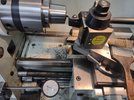
More pictures to follow.......
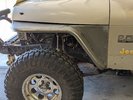
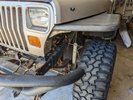
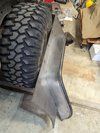
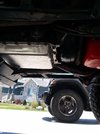

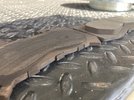
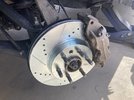
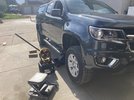
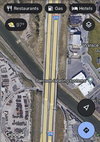

 www.instagram.com
www.instagram.com










